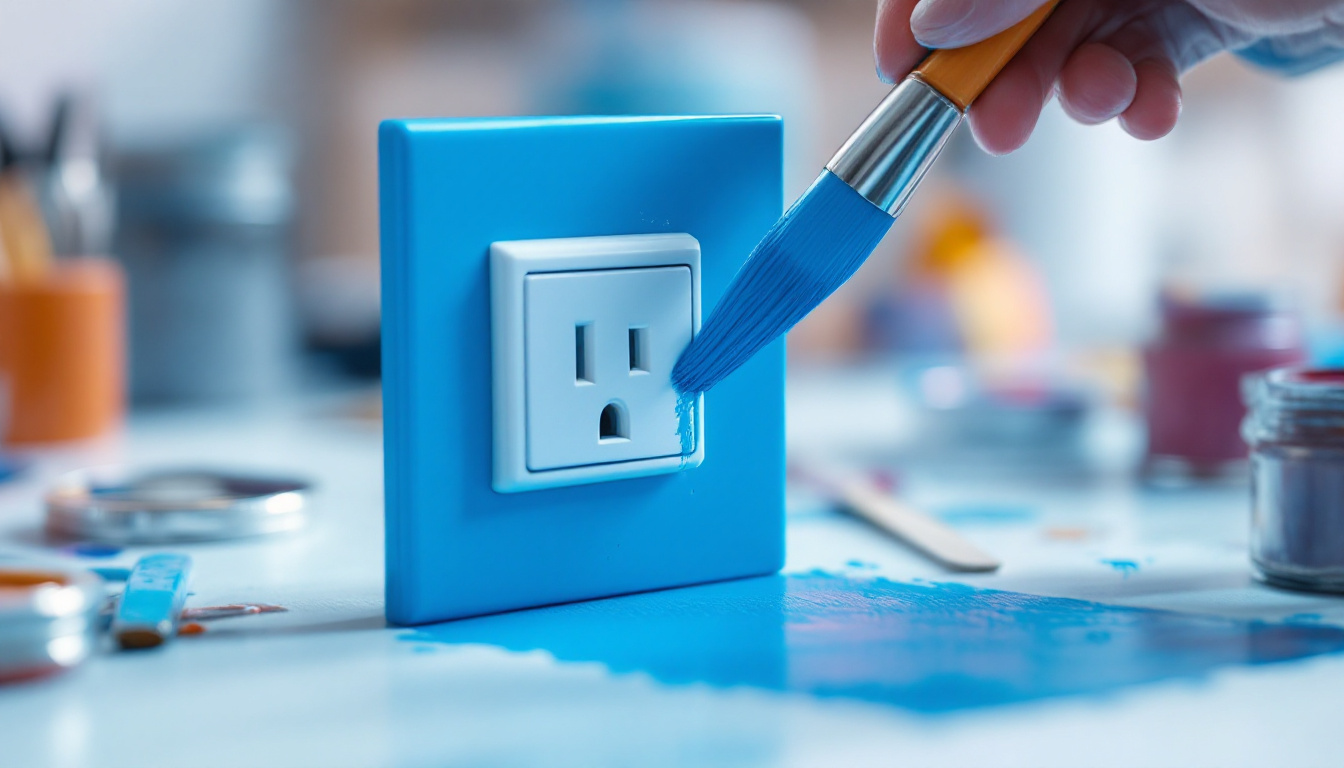
In the ever-evolving world of lighting design, LED tape dimmers have emerged as a crucial component for creating dynamic and versatile lighting solutions. For lighting professionals, understanding the intricacies of LED tape dimmers is essential to ensure optimal performance, energy efficiency, and client satisfaction. This article serves as a comprehensive checklist to guide lighting contractors through the essential aspects of LED tape dimmers.
LED tape dimmers are devices that allow for the adjustment of brightness in LED strip lighting. They play a vital role in enhancing the ambiance of a space, offering flexibility in lighting design. The technology behind these dimmers can vary, and understanding the different types available is key for lighting professionals.
There are primarily two types of LED tape dimmers: PWM (Pulse Width Modulation) and resistive dimmers. PWM dimmers are the most common in modern applications, as they provide smooth dimming capabilities without flickering. On the other hand, resistive dimmers can cause a drop in efficiency and are less favored in professional settings.
Additionally, some dimmers are designed specifically for low-voltage applications, while others can handle higher voltage systems. Knowing the specific requirements of a project will guide the selection of the appropriate dimmer type. For instance, PWM dimmers are particularly advantageous in settings where precise control over brightness is necessary, such as in photography studios or art galleries, where lighting can significantly affect the perception of color and detail.
Compatibility is a crucial factor when selecting LED tape dimmers. Not all dimmers work with every LED strip, and mismatched components can lead to performance issues or even damage. It’s essential to check the voltage rating of both the LED tape and the dimmer to ensure they align.
Moreover, the wattage capacity of the dimmer must be considered. Each dimmer has a maximum load it can handle, and exceeding this limit can result in overheating or failure. A thorough understanding of the specifications will help avoid such pitfalls. Furthermore, some advanced dimmers come equipped with features like remote control or smartphone app integration, allowing users to adjust lighting from a distance, which can be particularly useful in larger spaces or for those with mobility challenges. This added convenience not only enhances usability but also opens up new possibilities for creative lighting arrangements, making it easier to set the mood for various occasions, from intimate dinners to vibrant parties.
Proper installation of LED tape dimmers is paramount to ensure their functionality and longevity. Lighting professionals must adhere to specific guidelines to achieve optimal results.
When wiring LED tape dimmers, it is vital to follow the manufacturer’s instructions closely. Most dimmers will have clear wiring diagrams that indicate how to connect the power supply, LED strips, and any control systems. Using the correct gauge wire is also essential to prevent voltage drop and ensure efficient operation.
Additionally, ensuring secure connections will minimize the risk of flickering or dimming issues. Using soldered connections or high-quality connectors can enhance reliability and performance. It’s also important to consider the layout of the wiring; keeping wires organized and neatly routed can prevent accidental damage and make future troubleshooting easier. Using cable ties or conduits can help maintain a clean installation, which is not only aesthetically pleasing but also functional.
After installation, testing the system is critical. Lighting professionals should verify that the dimmer operates smoothly across its entire range. This includes checking for any flickering at lower brightness levels or sudden jumps in intensity.
It is also advisable to test the dimmer with the full load of LED strips that will be used in the final installation. This will help identify any potential issues before the project is completed and handed over to the client. During this testing phase, professionals should also monitor the temperature of the dimmer and the LED strips, as excessive heat can indicate underlying problems that may affect performance and safety. Implementing a thorough testing protocol not only ensures that the installation meets quality standards but also builds trust with clients, showcasing a commitment to excellence in lighting solutions.
Modern LED tape dimmers come equipped with a variety of advanced features that can enhance the user experience and increase the versatility of lighting designs.
Smart dimmers allow for remote control and automation of lighting systems. These devices can be integrated with smart home systems, enabling users to adjust lighting from their smartphones or through voice commands. For lighting professionals, understanding how to implement these systems can set them apart in a competitive market.
Moreover, features such as scheduling and scene setting can significantly enhance the functionality of a lighting design, allowing for tailored experiences in residential or commercial spaces. For example, a restaurant can create different moods for lunch and dinner services by pre-programming lighting scenes that automatically adjust throughout the day. This not only improves the dining experience but can also contribute to energy savings by ensuring lights are only used when necessary.
Some LED tape dimmers offer the ability to adjust not only brightness but also color temperature. This feature is particularly valuable in settings where the mood and atmosphere need to be adjusted throughout the day. For instance, cooler temperatures can be used during the day to enhance focus, while warmer tones can create a cozy environment in the evening.
Implementing color temperature control requires a deeper understanding of the LED technology being used, as not all strips are designed for this feature. Knowledge of compatible products is essential for successful implementation. Additionally, the ability to fine-tune color temperature can be particularly beneficial in environments such as art galleries or retail spaces, where the accurate representation of colors can influence customer perception and purchasing decisions. By providing the right lighting conditions, businesses can enhance the visual appeal of their products and create a more inviting atmosphere for their clientele.
Even with the best practices in place, issues can arise with LED tape dimmers. Understanding common problems and their solutions is vital for lighting professionals.
Flickering is one of the most common issues encountered with LED tape dimmers. This can result from several factors, including incompatible dimmers, poor wiring connections, or insufficient load on the dimmer. To troubleshoot, professionals should first ensure that the dimmer is compatible with the LED strips in use.
If compatibility is confirmed, checking the wiring connections for security and integrity is the next step. In some cases, adding more LED strips to meet the minimum load requirement of the dimmer can resolve flickering issues.
Overheating can be a serious concern, particularly in high-load situations. If a dimmer is getting excessively hot, it may be a sign that it is being overloaded or that there is inadequate ventilation. Lighting professionals should ensure that the dimmer is rated for the total wattage of the connected LED strips.
Additionally, ensuring proper airflow around the dimmer can help mitigate overheating risks. In some cases, using a dimmer with a built-in heat sink can provide additional protection against heat-related issues.
Compliance with safety standards and regulations is a non-negotiable aspect of any lighting project. Lighting professionals must be aware of the relevant codes and regulations that apply to LED tape dimmers.
Local electrical codes can vary significantly, and it is essential for lighting professionals to stay informed about the regulations in their area. This includes understanding the requirements for installation, wiring, and the types of dimmers that are permitted.
Failing to comply with these regulations can result in safety hazards and may lead to costly rework or fines. Regularly reviewing local codes and participating in training can help ensure compliance.
When selecting LED tape dimmers, it is crucial to choose products that have been tested and certified by recognized safety organizations. Look for certifications such as UL (Underwriters Laboratories) or ETL (Intertek) to ensure that the products meet safety standards.
Using certified products not only enhances safety but also provides peace of mind for both the contractor and the client. It demonstrates a commitment to quality and reliability in lighting design.
Regular maintenance of LED tape dimmers is essential to ensure their longevity and performance. Lighting professionals should establish a maintenance routine to keep systems functioning optimally.
Conducting routine inspections of the dimmer and the connected LED strips can help identify potential issues before they escalate. Look for signs of wear, such as frayed wires or discoloration, which can indicate overheating or electrical problems.
Additionally, checking the dimmer’s functionality periodically ensures that it continues to operate smoothly and efficiently. This proactive approach can save time and resources in the long run.
Dust and debris can accumulate on dimmers and LED strips, potentially affecting performance. Regular cleaning can help maintain optimal functionality. Ensure that power is turned off before cleaning any components to avoid electrical hazards.
Using a soft cloth or a gentle brush can effectively remove dust without damaging the equipment. Keeping the installation area clean not only enhances performance but also contributes to the overall aesthetic of the lighting design.
LED tape dimmers are an essential tool for lighting professionals, offering flexibility and control in various lighting applications. By understanding the different types of dimmers, installation guidelines, advanced features, and common troubleshooting techniques, lighting contractors can enhance their expertise and deliver exceptional results to their clients.
Staying informed about regulatory compliance, safety standards, and maintenance practices further ensures that lighting professionals can provide reliable and efficient lighting solutions. With this essential checklist in hand, lighting contractors are well-equipped to navigate the complexities of LED tape dimmers and elevate their projects to new heights.
Ready to take your lighting projects to the next level? At LumenWholesale, we provide lighting professionals like you with the highest quality LED tape dimmers and a vast array of spec-grade lighting products. Our commitment to affordability and quality means you can access the best lighting solutions at wholesale prices, without the extra costs. Plus, with free shipping on bulk orders, you can stock up on what you need and keep your projects shining brightly. Elevate your lighting designs today and experience the unbeatable value and convenience at LumenWholesale.

Discover the intricate workings of traffic lights and uncover the often-overlooked elements that can enhance lighting projects.

Discover essential insights from lighting contractors on choosing the perfect lighting for large kitchen islands.

Explore the pros and cons of edge-lit lighting compared to other options in this insightful guide for lighting contractors.

Discover how tiny painted electrical outlets can transform your lighting business.